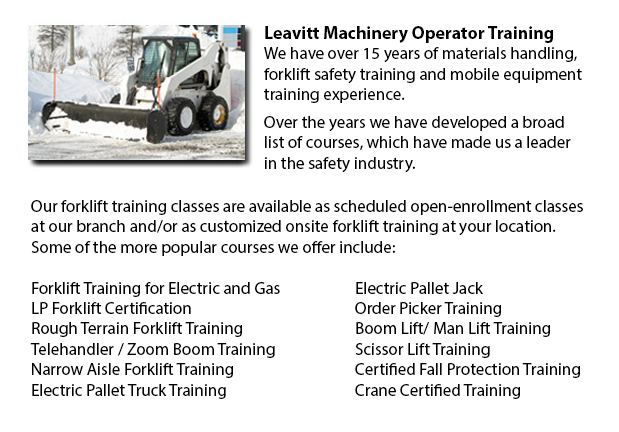
Ottawa Skid Steer Ticket - On a skid-steer loader, the lift arms are beside the driver with pivot points at the rear of the driver's shoulders. This makes them different compared to a traditional front loader. Because of the operator's closeness to moving booms, early skid loaders were not as safe as conventional front loaders, particularly through the operator's exit and entry. Modern skid-steer loaders today have numerous features in order to protect the driver like for example fully-enclosed cabs. Similar to several front loaders, the skid-steer model can push materials from one location to another, is capable of loading material into a truck or trailer and can carry material in its bucket.
Operation
Usually a skid-steer loader could be utilized on a jobsite rather than a big excavator by digging a hole from within. To start with, the skid-steer loader digs a ramp leading to the edge of the desired excavation, and then it uses the ramp to excavate material out of the hole. As the excavation deepens, the machine reshapes the ramp making it longer and steeper. This is a remarkably helpful way for digging underneath a structure where there is not adequate overhead clearance for the boom of a large excavator. For instance, this is a common scenario when digging a basement under an existing house or structure.
There is much flexibility in the attachments which the skid steer loaders are capable of. Like for instance, the traditional bucket of many of these loaders could be replaced with several accessories that are powered by the loader's hydraulic system, comprising tree spades, sweepers, mowers, snow blades, cement mixers, pallet forks and backhoes. Some other popular specialized attachments and buckets include trenchers, angle booms, dumping hoppers, wood chipper machines, grapples, tillers, stump grinders rippers, wheel saws and snow blades.
History
During 1957, the very first 3-wheeled, front-end loader was invented in Rothsay, in the state of Minnesota by brothers Cyril and Louis Keller. The brothers invented the loader to be able to help a farmer mechanize the method of cleaning turkey manure from his barn. This particular equipment was compact and light and included a rear caster wheel which enabled it to maneuver and turn around within its own length, enabling it to perform similar tasks as a traditional front-end loader.
The Melroe brothers of Melroe Manufacturing Company in Gwinner, N.D. bought during the year 1958, the rights to the Keller loader. The business then hired the Keller brothers to assist with development of the loader. The M-200 Melroe was the outcome of this partnership. This particular model was a self-propelled loader that was launched to the market during 1958. The M-200 Melroe featured a 12.9 HP engine, a 750 lb lift capacity, two independent front drive wheels and a rear caster wheel. By 1960, they replaced the caster wheel with a rear axle and introduced the very first 4 wheel skid steer loader which was called the M-400.
The M-400 immediately became the Melroe Bobcat. Normally the term "Bobcat" is utilized as a generic term for skid-steer loaders. The M-440 had an 1100 lb rated operating capacity and was powered by a 15.5 HP engine. The company continued the skid-steer development into the middle part of the nineteen sixties and launched the M600 loader.
-
Ottawa Boom Lift Ticket
Ottawa Boom Lift Ticket - Boom Lifts are a table lift piece of equipment which could be lifted or lowered to varying heights, making this apparatus a useful tool for many manufacturing purposes. There are some unique types of Boom Lift consisting of... More -
Ottawa Boom Lift Operator Training
Ottawa Boom Lift Operator Training - The cherry picker work platform is a kind of work platform, which will typically have a bucket or platform at the hydraulic lifting system's end. The device is also referred to as a man lift, boom lift, basket cra... More -
Aerial Lift / Boom Lift / Man Lift / Scissor Lift Training in Ottawa
Scissor lifts are forklift tables which raise objects and people and supplies vertically. They are normally utilized in industrial, construction and commercial environments. A common use of scissor lifts is for lifting or lowering construction suppli... More -
Ottawa Crane Certification
Ottawa Crane Certification - The Crane Certification training program covers content suggested by industry concerning the safe and efficient operation of cranes. Individuals training would know the following: pre-operational, operational and post ope... More -
Ottawa Heavy Equipment Training Courses
Ottawa Heavy Equipment Training Courses - The first step required to take when selecting heavy equipment operator courses is determining the capacity you wish to work with heavy machinery. Like for example, you can take courses that will teach you ho... More -
Ottawa Fall Protection Ticket
Ottawa Fall Protection Ticket - Fall-related accidents are the number one reason of death in the construction trade. The potential for fall accidents very much increases based on the kind of work which is being completed within your workplace. So, be... More -
Ottawa Telehandler Operator Training
Ottawa Telehandler Operator Training - Telescopic handler Forklifts or telehandler forklifts are common industrial machinery seen in various construction business settings. The telehandler is a useful machine and makes for a valuable tool that can be... More -
Fall Protection Training in Ottawa
Regrettably, there is a large number of workplace injuries linked to falling and lots of fall-related deaths reported each year. Lots of these instances might have been prevented by having proper measures in place, offering proper training and equipp... More

Forklift Certification Ottawa
TOLL FREE: 1-888-254-6157
Ottawa, Ontario
forkliftcertificationottawa.com
Email Us
About Us


